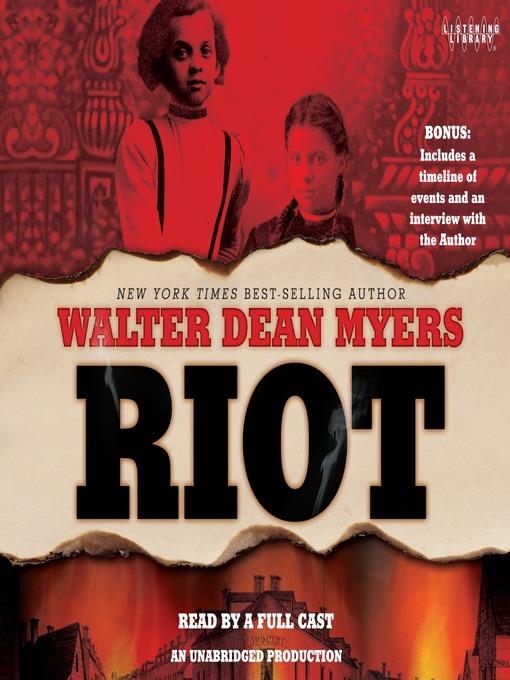
Riot
کتاب های مرتبط
- اطلاعات
- نقد و بررسی
- دیدگاه کاربران
نقد و بررسی

Walter Dean Myers bases his story on a pivotal moment in U.S. history, the infamous draft riots of New York City in July 1863. Working-class men rose up against being conscripted to fight the Civil War when the wealthy, by law, could buy themselves out with a $300 Commutation Fee. In the ensuing violence, ongoing tensions came to a head. More than a dozen narrators tell the story of a girl whose Irish mother and black father run a hotel during this time. As violence rages, young Claire questions why the color of someone's skin matters so much. Myers uses a screenplay device to give scope to the story. The narrators' segues between narrative and screenplay are a bit abrupt, but this doesn't mar the listener's overall enjoyment. The tightly written book is followed by a time line that summarizes events of the day, as well as an interview with the author. Myers's story brings to light an important part of American history during the Civil War. M.B. (c) AudioFile 2009, Portland, Maine

September 7, 2009
Written in screenplay format like his Printz Award–winning Monster
, Myers's historical novel is set in 1863 New York City during the Civil War draft riots, which began as a protest against conscription and resulted in a clash between the city's Irish and African-American populations. The streets are no longer safe for 15-year-old Claire, whose parents (her father is black, her mother Irish) run the Peacock Inn restaurant/tavern. “I don't see why you have to be a black person or a white person,” Claire says, after being cautioned to stay inside. “Why can't you just be a person?” But when the Colored Orphan Asylum is looted and burned, Claire feels an obligation to help. Myers writes poignant dialogue, laying bare the prejudices of the period, while exploring Claire's emotional transition out of childhood. Stage directions (“CLOSE-UP of MAEVE. Her face is a picture of incredible anger as she screams at the POLICE”) pull readers into both the setting and characters, though the transitions between scenes are occasionally jarring. Readers should find this story moving—a direct result of Myers's empathetic portrayal of those on both sides. Ages 12–up.

























دیدگاه کاربران